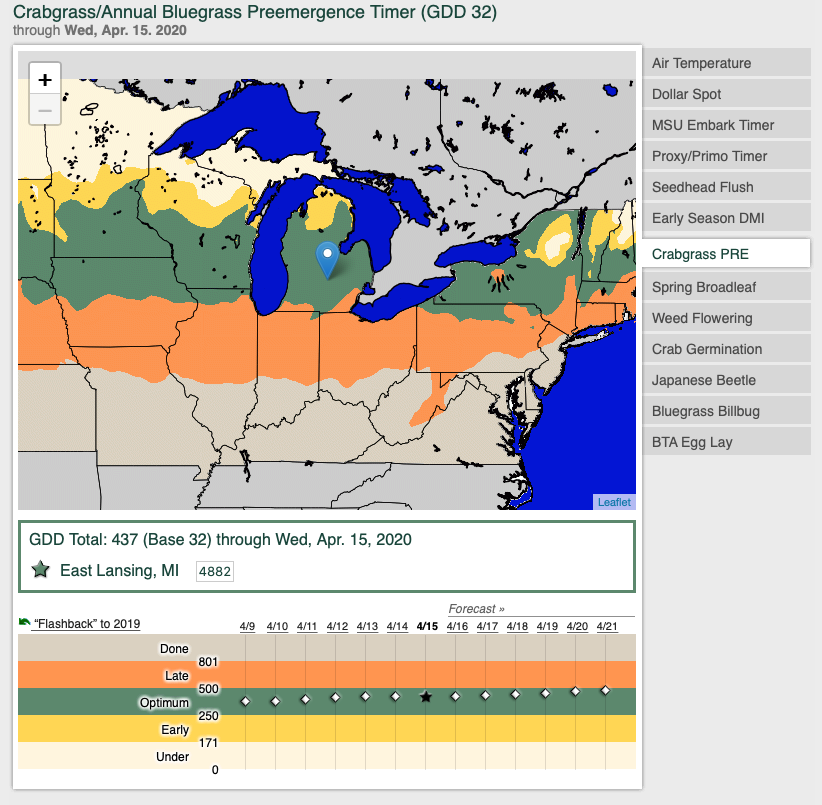Cold temperatures extend application timing for crabgrass preemergence herbicides
Cold soil temperatures should extend timing for crabgrass preemergence herbicide applications.

The cold temperatures and even snow showers in many parts of Michigan this last week have really slowed down turfgrass growth and provided additional time for making crabgrass preemergence applications. According to GDDTracker, almost the entire Lower Peninsula is now in the optimum application window for crabgrass preemergence herbicides. Southern areas of the state are almost past the optimum application window but with the cold temperatures this week, soil temperatures have declined significantly. Soil temperatures at the Hancock Turfgrass Research Center in East Lansing, Michigan, have declined from a high of 57 degrees Fahrenheit on April 8, 2020, to a high of 45 on April 15.

The growing degree day (GDD) model attempts to predict the optimum application timing for when the 0-2 inch depth soil temperature is consistently between 50-55 F. Applications in this soil temperature range provide adequate time for the preemergence herbicide to be applied and watered in before crabgrass germination. However, remember 80% percent of germination will occur when soil temperatures at the 0- to 2-inch depth are consistently between 60 and 70 F. For preemergence herbicides to be effective, they need to be applied before the soils reach this optimum temperature range.
Although GDD accumulation is indicating many areas of the state may be past the optimum application timing soon, with soil temperatures now lagging behind early spring GDD accumulation, we should have more time to apply preemergence herbicides and still achieve acceptable crabgrass control.



 Print
Print Email
Email
